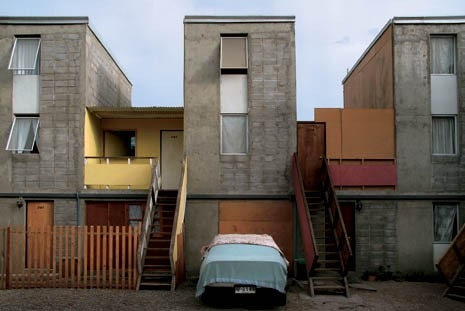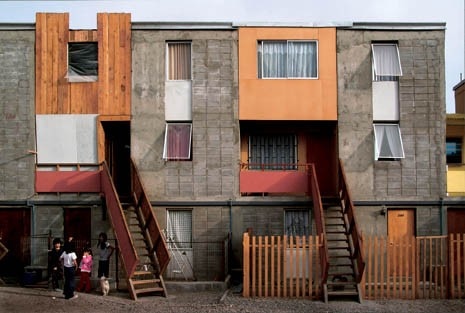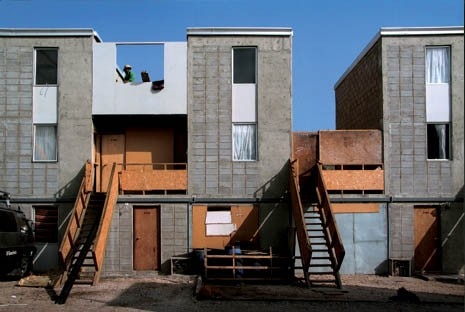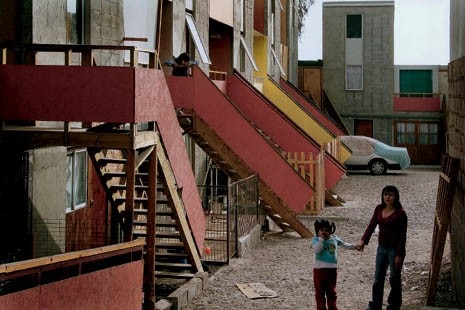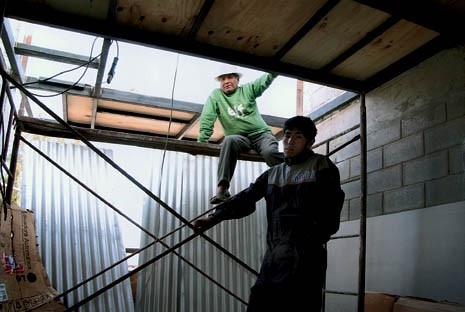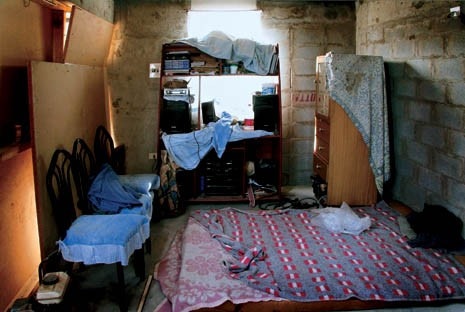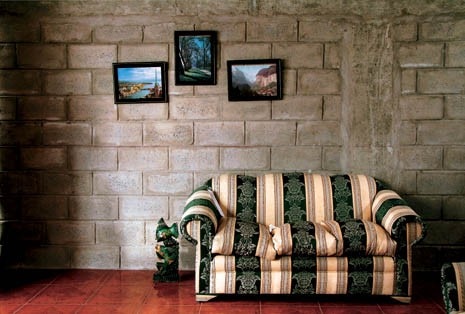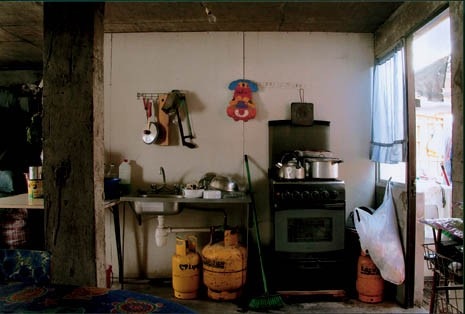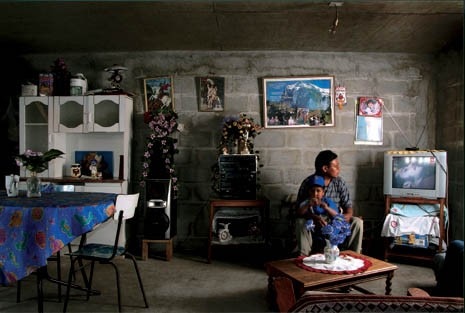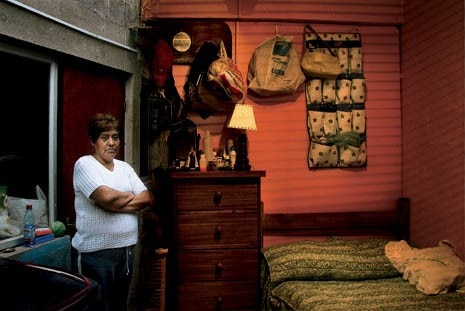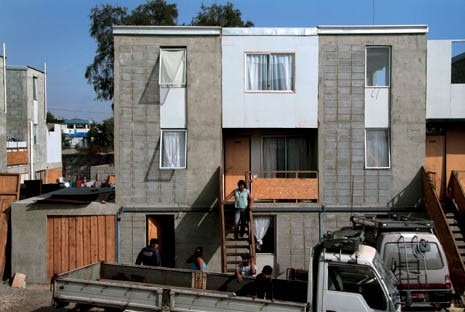Interiors with figures
Fabrizio Gallanti
On December 14, 2004, ninety-three families belonging to a community established thirty years ago in the Quinta Monroy district of Iquique in the north of Chile moved into apartments built as part of the Elemental project. The neighbourhood was renamed Violeta Parra, after the singer, poet and artist who embodied Chile’s left-wing tradition of the 1970s.
The almost classical austerity of the settlement, built under the architectural direction of Alejandro Aravena, resisted for just one isolated afternoon in a series of photographs taken just after the site was completed; the inhabitants settled in soon after and these photographs are now part of an album, like those of a wedding, a birthday, the birth of a baby, the purchase of one’s first car. Sara Maestrello’s photographs depict the progressive and accelerated transformation, the successive infiltrations that have altered the initial image of the project without corroding its spirit.
Thanks to technical and design support workshops set up by Elemental’s architects, the inhabitants started to extend and modify the architecture and spaces within the area, as well as participate in the design phase by way of an articulated dialogue. Conserving the character of the original architectural design, the interventions ranged from the integration of furniture and the assembly of fragments of old houses to more complex work involving extensions that were quite similar to other residential architecture projects in Latin America (the El Tigral area in Bogotá by René Carrasco or interventions at Cabo Frio, Rio de Janeiro). By reducing the urge to move and increasing building density, Elemental offers a different model to the current horizontal proliferation of South American city outskirts, of the favela up to the millionaire villas.
Despite the elevated property value in the area, it keeps the community on the same plot of land close to the centre of Iquique, thus maintaining emotional and work ties. It also favours the use of communal space and rich and articulated living conditions. The design of each element and its assembly was developed to be inexpensive and easy to maintain, and no pictorial or populist gratification appear on the houses of Quinta Monroy. The need here was to build a structure - the indispensable base from which to start a new life. This was something that the inhabitants, installed precariously for too many years, had been unable to do.
The architectural project is a strategy of territorial appropriation. It allows for a variety of living arrangements but shuns a predictive and prescriptive role; instead, it lets itself be manipulated by the inhabitants, who are indifferent to the permanence of the form. Paradoxically, Aravena designs an archaeology that outlines, somewhat harshly, the elements of a pre-existence onto which life can be supported and which even now has to be deciphered amidst the first re-paintings, extra storeys and extensions.
A common feature between the project and Álvaro Siza’s Quinta da Malagueira in Évora, Portugal, is a tendency to be simultaneously discrete and pragmatic while still managing to determine the foundations of a city where historical stratification appears compressed into a reduced time span. In his 1922 essay “New Proletarian Art”, Karel Teige indicated that overcoming and eliminating stale forms of bourgeois art would require a new intimate barrier between art and life, a place where reality would inform every aesthetic action.
The Elemental project builds an open and varied scenario that lets life unfold in all its freedom and potential, and which resists the foresighted controls of architecture. It promotes the expansion of new aesthetic practices able to contain conscious political action. Moreover, it registers in the interrupted tradition of modern architecture as a supportive action aimed at resolving the problem of the home, where the architect is a mediator within social, technical and political processes who creates a continuity similar to Moisei Ginzburg and Ivan Leonidov of the Soviet group OSA.
The narrative tone of the images here reinforces the sensation that this redefinition of the architect’s role has been achieved, subtracting it from the cannibalism of the image and the spectacularisation of architecture. They are “interiors with figures” where the subject photographed is conscious and controlled, as in the portraits of Patrick Faigenbaum and Jean-Louis Schoelkopf. There are neither empty perspectives nor stolen images; it is the revelation of a new domestic intimacy, proudly on display as a dignified representation that has been reinvigorated thanks to an architectural project.
Elemental is an international initiative begun in Chile to promote innovation in architecture, building technology and town planning in the design and construction of low-cost housing. In the city of Iquique, Alejandro Aravena has put together a pilot project “to be completed” for 93 families that will serve as an initial model to validate these ideas. Since it opened in December 2004, “Quinta Monroy” in Iquique has successfully expanded and gradually adapted its original structure at a cost of only 7,500 US dollars per unit, corresponding to the government subsidy, to pay for the land as well as planning fees and construction costs.
